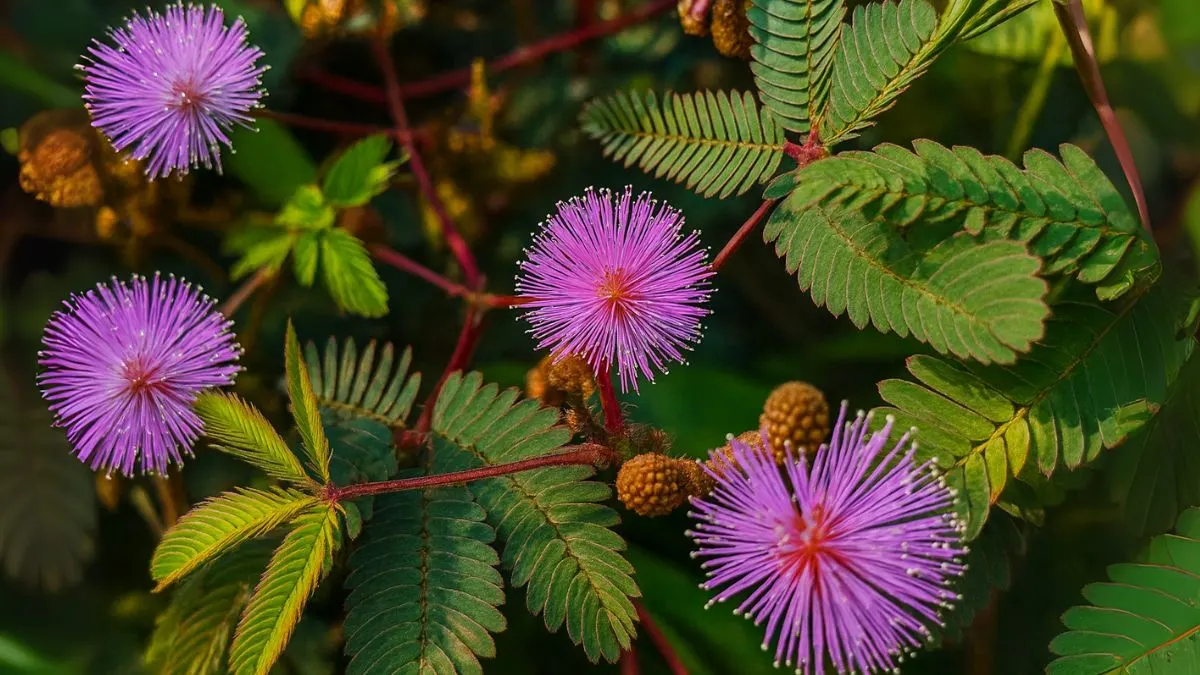The Mimosa plant, popularly known as the Touch-Me-Not, never fails to amaze with its unique ability to fold its leaves when touched. While most people recognize it as a quirky garden addition, few know that this humble plant is packed with powerful medicinal benefits. Across India and many parts of Asia, Mimosa has long been used in traditional medicine to treat wounds, infections, and digestive troubles. Today, its healing properties are increasingly recognized in global wellness communities, from Canada to the USA.
The Botanical Wonder of Mimosa

The Mimosa pudica, or Touch-Me-Not, is a creeping perennial herb with delicate pink flowers. Its sensitivity to touch is a natural defense mechanism, but its true power lies in its bioactive compounds. These compounds are behind its antibacterial, antivenom, antifertility, anticonvulsant, antidepressant, and aphrodisiac properties, which are well-documented in herbal medicine practices.
Medicinal Benefits of the Mimosa Plant
1. Wound Healing
One of the most celebrated uses of the Mimosa plant is in wound healing. Its extracts are applied to cuts, burns, and abrasions to reduce inflammation and promote quicker recovery. Folk remedies often recommend crushed its leaves as a natural antiseptic, thanks to its antibacterial action. Personally, I’ve seen village healers in India prepare simple poultices from Mimosa leaves that truly help small wounds heal faster.
2. Relief from Piles
The plant has been used as a remedy for bleeding piles for many years. Its soothing nature helps reduce pain and inflammation in sensitive areas. Some traditional Ayurvedic formulations include Mimosa root paste for treating hemorrhoids naturally.
Also Read: Viola Flowers: Tiny Blooms With Big Personality—And Easy Care!
3. Antibacterial and Antiviral Properties
The Mimosa plant is rich in compounds that fight bacteria and other pathogens. This makes it a natural option for addressing skin infections or digestive issues caused by harmful microbes.
4. Other Health Benefits
-
- Its anticonvulsant qualities make it helpful in neurological research.
- The antidepressant potential of Mimosa has been explored for mood regulation.
- In folk medicine, this is even considered an aphrodisiac for boosting vitality.
How Mimosa Helps with Swelling and Pain
Another significant benefit is its ability to ease swelling. Extracts from the plant are great at easing swelling and helping wounds heal faster, which is why it is often used in poultices and topical ointments.
Uses Beyond Medicine
- In Traditional Rituals: The Mimosa plant is also valued in cultural contexts. In parts of India, it is used in rituals and as a protective plant around homes.
- In Modern Herbal Products: Globally, especially in the USA and Canada, natural wellness brands are incorporating its extracts into herbal teas, ointments, and supplements. This reflects a growing demand for sustainable, plant-based solutions.
Tips for Growing Mimosa at Home
Mimosa is not just a healing herb—it’s also an attractive and interactive plant for gardens and indoor spaces.
Requirement |
Care Tip |
Soil |
Prefers well-drained, sandy soil |
Watering |
Moderate; do not overwater |
Light |
Thrives in bright, indirect sunlight |
Growth |
Best in warm, humid climates |
For those in colder regions like Canada, Mimosa can be grown indoors in containers, provided it gets enough warmth and light.
Also Read: Fairy Bells in Your Garden? Discover the Magic of the Wood Sorrel Plant
Why the Mimosa Plant is Gaining Global Recognition
With modern science validating traditional uses, the Mimosa plant is no longer just a garden curiosity. Its combination of antibacterial, wound-healing, and anti-inflammatory properties makes it a standout in natural medicine. Moreover, its reputation as a mood-lifter and its potential in modern herbal research ensure that this plant’s value continues to rise.
Whether you’re a gardener looking for a unique plant, a wellness enthusiast exploring herbal remedies, or simply curious about traditional healing practices, Mimosa deserves your attention. Plant it, nurture it, and experience its healing touch firsthand.






